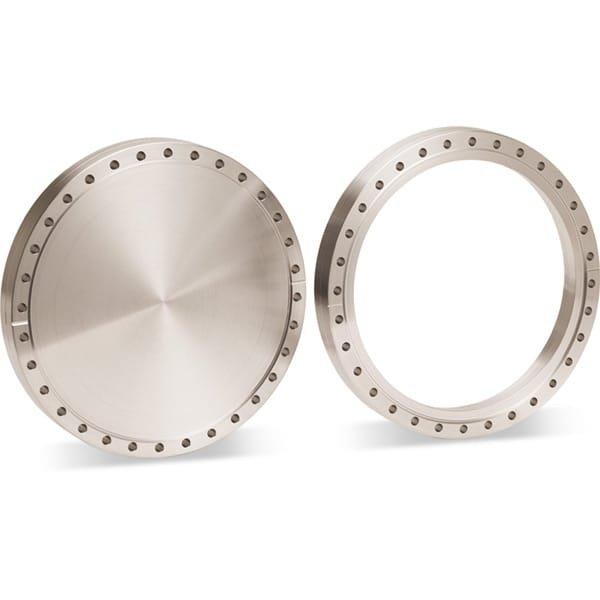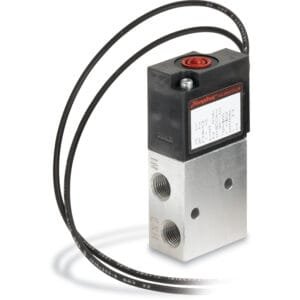Overview of ConFlat Flanges
The ConFlat flange is the leading choice for high vacuum (HV) and ultra-high vacuum (UHV) applications. This flange system supports a wide range of gauges, instruments, accessories, and feedthroughs.
Blank (Blind) Flange
A blank or blind flange serves as a solid disc-shaped fitting within vacuum systems. It can be customized through machining to close off unused tubing or ports on a vacuum chamber.
Sealing Mechanism
The sealing mechanism utilizes a knife-edge that is precisely machined below the flange’s flat surface. When the bolts of a flange pair are tightened, the knife-edges create annular grooves on either side of a soft metal gasket. This extruded metal fills any machining marks and surface imperfections in the flange, resulting in a leak-tight seal. The ConFlat seal operates effectively within a pressure range from 760 torr (103 mbar) down to less than 1 x 10⁻¹³ torr (less than 1.3 x 10⁻¹³ mbar) and a temperature range of -196° C to 450° C, depending on the material used.
Flange Sizing
In North America, flange sizes are typically referenced by their outside diameter (O.D.). In contrast, Europe and much of Asia generally refer to the nominal internal diameter (nominal I.D.) of the largest tube that can be welded to a bored flange in their nomenclature.
Available Versions of ConFlat Flanges
ConFlat flanges come in four distinct configurations:
- Fixed Flange: This is a one-piece design where the bolt-hole orientation is fixed relative to the fitting.
- Rotatable Flange: Comprising two parts—a weld ring and a bolt ring—this flange allows for the bolt ring to rotate around the inner weld ring.
Both fixed and rotatable flanges can be customized with either through (clearance) holes or tapped holes, catering to various application needs.
Ordering Table
| Flange Size/OD | Type | Note | Part Number |
| DN275CF (13.25" OD) | Fixed | — | F1325X000N |
| DN275CF (13.25" OD) | Fixed Tapped | F1325X000NM | |
| DN275CF (13.25" OD) | Fixed Tapped | — | F1325X000NT |
| DN275CF (13.25" OD) | Rotatable | — | F1325X000R |
| DN275CF (13.25" OD) | Rotatable Tapped | — | F1325X000RT |
| DN275CF (13.25" OD) | Fixed | — | F1325X1000N |
| DN275CF (13.25" OD) | Fixed Tapped | — | F1325X1000NM |
| DN275CF (13.25" OD) | Fixed Tapped | — | F1325X1000NT |
| DN275CF (13.25" OD) | Rotatable | — | F1325X1000R |
| DN275CF (13.25" OD) | Rotatable Tapped | — | F1325X1000RT |
| DN275CF (13.25" OD) | Fixed | — | F1325X1075N |
| DN275CF (13.25" OD) | Fixed Tapped | — | F1325X1075NT |
| DN275CF (13.25" OD) | Rotatable | F1325X1075R | |
| DN275CF (13.25" OD) | Rotatable Tapped | — | F1325X1075RT |





Reviews
There are no reviews yet.